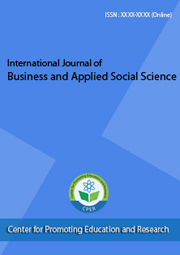Journal Menu
current
VOLUME; 9, ISSUE; 2, February 2023
Table of Contents
Articles
Author(s): Joel Patomäki
Full Text
736 516
736 516
Abstract:
I intend to write about Basel bank's limiting technologies from the point of view of trust, coming from the fact that banks have to adjust their risk understanding tools and test them constantly.It is not always known what exactly causes a risk. I am interested in risk-understanding technologies which do not govern this in advance but only require passing certain risk tests. Therefore, I will research the idea of Basel’s bank limiting technologies as assemblages that want connections only with other specified assemblages. For example, certain risk levels must be adjusted to form a harmonious whole that passes these tests. I will argue that by understanding Basel’s bank limiting technologies through the theory of assemblages, it is possible to spell out the notion of biopower in the assemblage that has only a purely economic or statistical status.
This biopower means the ability of a certain bank to control its assessments by estimating those same forms in different diagrams. I will work with the condition that there are no rules as to how to control the risks, only of what the abstract risk levels must be. This is based on the standpoint of the assemblage theory's idea that certain particles can be removed because the particles are tied to the whole. The point of this analysis is to show that trust does not lie in mutual understanding, but rather in the abstract risk levels and certain tests that the bank has to go through.
Trust is not created by doing something that would restrict the bank’s ability to act by itself, but by making sure that the governor knows that the bank is in trouble if it does not keep risk at a certain level compared to rules that would govern how the bank has to act. It does this by using a technique that ties the bank’s risks to the tools with which it normally functions. Therefore, it cannot cheat the system by using different tools to profit from excessive risks.
This system of certain risk technologies tied to both sides of the bank’s infrastructure is called M.A.D. (Mutually Assured Destruction) because it does not show one side without the other. Therefore, biopower is applied to the bank’s risk technologies by making sure that bank knows how to work for its well-being and at the same time also ensures that it works for the general good. This sounds a lot like an invisible hand that makes individuals’ actions beneficial to the whole community. This idea seems to develop more instrumentally in this argument, but there is the same “clever lie” behind it.






